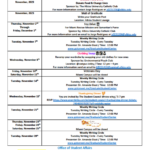Autism spectrum disorder (ASD) is a neurodevelopmental condition that can cause significant challenges in social communication and interaction, as well as restricted and repetitive behavior patterns. While ASD has historically been associated predominantly with boys, it is important to recognize that individuals of all genders can be affected by the disorder, each with unique manifestations and experiences. Research estimates that the male-to-female ratio is around 4:1 (Tubío-Fungueiriño et al., 2020). Additionally, studies have shown that autistic boys are diagnosed earlier than females (Wood-Downie et al., 2021), underscoring the need for greater awareness and understanding of how ASD presents in individuals across the gender spectrum. It is essential to approach ASD research with an inclusive perspective that respects and acknowledges diverse gender identities.
Camouflaging is a term used when an autistic person masks their symptoms and social difficulties (Schuck et al., 2019). Masking occurs mainly in social settings where the individual adjusts to the demands of the environment (Tubío-Fungueiriño et al., 2020). Multiple studies have found that females mask their symptoms more than males. It was also seen that females showed more intense symptoms to be diagnosed properly with ASD (Schuck et al., 2019). Masking may look like molding to an individual’s environment and expending their cognitive and emotional energy to behave as their typically developing peers and avoid discrimination. In addition, camouflaging to conform to societal expectations can create challenges in maintaining long-term friendships and effectively coping with conflicts, especially compared to males and non-autistic females.
When examining cognitive domains, it becomes evident that girls with ASD and no intellectual impairment possess cognitive abilities similar to those of neurotypical females and even excel in certain areas compared to boys with ASD. Notably, they may exhibit strengths in social cognition, language skills, and attention to detail.
It is important to acknowledge that gold-standard diagnostic measures were primarily developed from a male-centric perspective, which may limit their effectiveness in capturing the unique characteristics and presentation of ASD in girls. The presence of sex-based differences in diagnostic traits underscores the necessity for further research to understand how ASD manifests in girls. Historically, acquiring support services and intervention strategies has been difficult for females who mask (Wood-Downie, 2021). It is important for practitioners to go beyond behavioral domains and look at social, emotional, and cognitive functioning, plus parent/teacher questionnaires to examine for a diagnosis. Additionally, it has been seen that individuals who camouflage are less likely to receive services and a formal diagnosis (NASEN, 2016).
The effect of camouflaging and masking is understudied. We now know that camouflaging and masking are adaptive mechanisms for individuals in diverse settings. Still, they have negative effects, including misdiagnosis, late diagnosis, underdiagnosis, loss of early intervention strategies, and limited resources. Further investigation into camouflaging and masking is crucial for understanding the long-term impact of these behaviors on the well-being of individuals with ASD. It can provide valuable insights into their social interaction difficulties and overall quality of life. In addition, research can inform the development of targeted interventions and support strategies that address the unique needs of individuals who engage in camouflaging and masking.
If you or someone you know is exhibiting masking behavior or suspect they may have ASD, seeking additional information, testing, and resources is essential. There are several avenues individuals can explore to gain a better understanding and find support:
- Stay Informed through Research Publications and Studies: Keep up-to-date with the latest research and studies focused on masking and ASD. Scientific journals like the Journal of Autism and Developmental Disorders, Autism Research, and Autism publish articles that expand knowledge and understanding of various aspects of ASD, including masking behaviors.
- Seek Guidance from Medical Professionals: Consult with healthcare providers specializing in autism spectrum disorder (ASD), such as pediatricians, psychologists, or psychiatrists. These professionals can offer valuable guidance, conduct assessments, and recommend appropriate interventions based on their expertise.
- Tap into Autism Organizations: Dedicated organizations like Autism Speaks, the Autism Society, and the National Autistic Society provide comprehensive resources for autism awareness and support. Visit their websites to access information on ASD, including specific details about masking behavior and its impact.
- Connect with Support Groups: Joining support groups, either in-person or online, connects individuals with others who share similar experiences. These groups offer vital emotional support, strategies, and a safe space to discuss challenges related to masking behavior.
Books
- “Neurotribes: The Legacy of Autism and the Future of Neurodiversity” by Steve Silberman: This book explores the history, cultural perceptions, and understanding of autism. It sheds light on the experiences of individuals with autism, including those who mask their symptoms.
- “The Autistic Brain: Thinking Across the Spectrum” by Temple Grandin and Richard Panek: Temple Grandin, a well-known advocate and individual with autism, shares her personal experiences and offers an in-depth look at the autistic brain. The book discusses different aspects of autism, including masking behaviors.
- “Masking Autism: A Guide to Managing Day-to-Day Challenges of Asperger’s Syndrome / High-Functioning Autism” by Brenda Dater: This practical guide focuses specifically on masking and the challenges faced by individuals with Asperger’s syndrome or high-functioning autism. It offers strategies for managing masking tendencies and navigating social situations.
- “Uniquely Human: A Different Way of Seeing Autism” by Barry M. Prizant: This book presents a compassionate and insightful perspective on autism. It emphasizes understanding and embracing the unique strengths and challenges of individuals with autism, including those who mask their symptoms.
Remember, each individual’s experience with ASD is unique, and seeking professional guidance is crucial for accurate diagnosis and tailored support. By actively seeking information, connecting with support networks, and staying informed about the latest research, individuals and their families can better navigate the challenges associated with masking behavior and access the necessary resources for their well-being.
References
Cage, E., & Troxell-Whitman, Z. (2019). Understanding the reasons, contexts, and costs of camouflaging for autistic adults. Journal of Autism and developmental disorders, 49(5),1899-1911.
Corbett, B. A., Schwartzman, J. M., Libsack, E. J., Muscatello, R. A., Lerner, M. D., Simmons,G. L., & White, S. W. (Year). Camouflaging in Autism: Examining Sex-Based andCompensatory Models in Social Cognition and Communication.
Loomes, R., Hull, L., & Mandy, W. P. L. (2017). What Is the Male-to-Female Ratio in Autism Spectrum Disorder? A Systematic Review and Meta-Analysis. Journal of the American Academy of Child and Adolescent Psychiatry, 56(6), 466–474. https://doi.org/10.1016/j.jaac.2017.03.013
NASEN. (2016). Girls and Autism: Flying under the radar. Staffordshire: Nasen.
Piterman, Ashra Louise. 2022. Autistic Women and Masking: The Road to Closing the Gender-Based Gap in Autism Spectrum Disorder Diagnoses. Master’s thesis, Harvard University Division of Continuing Education.
Schuck, R. K., Flores, R. E., & Fung, L. K. (2019). Brief report: Sex/gender differences in symptomology and camouflaging in adults with autism spectrum disorder. Journal of autism and developmental disorders, 49, 2597-2604.
Tubío-Fungueiriño, M., Cruz, S., Sampaio, A., Carracedo, A., & Fernández-Prieto, M. (2020). Social camouflaging in females with autism spectrum disorder: A systematic review. Journal of Autism and Developmental Disorders, 51(7), 2190– 2199. https://doi.org/10.1007/s10803-020-04695-x
Wood-Downie, H., Wong, B., Kovshoff, H., Mandy, W., Hull, L., & Hadwin, J. A. (2021). Sex/gender differences in camouflaging in children and adolescents with autism. Journal of Autism and Developmental Disorders, 51, 1353-1364.
About the Authors
Claudia Cedeno, BCaBA, is working towards her doctorate in clinical psychology, focusing on child and adolescent psychology. Her passion for serving her community through clinical practice has led her to develop an interest in understanding the distinct needs and challenges children and adolescents face.
Geraldine DeBianchi, M.S., is in her third year of the PsyD program. She is on the child track and has worked with children, adolescents, adults, families, and couples. Geraldine is pursuing her doctorate in the pediatric population. Her goals include providing comprehensive and integrative treatment, serving as an ally and advocate, and upholding the ethical standards of this profession.
Geraldine and Claudia’s fascination with masking behaviors in females grew from their firsthand experience at Healthy Minds Psychology, a practicum site dedicated to assessing individuals, particularly those on the autism spectrum. During their practicum hours, they encountered numerous cases where females went undiagnosed due to their masking abilities. This observation deeply resonated with Claudia and Geraldine, sparking a strong curiosity to further explore this area. Engaging in extensive conversations about the topic, Geraldine and Claudia were drawn to understanding the intricacies of masking behaviors in females with autism. These discussions highlighted the significant impact of masking on diagnosis, intervention, and overall well-being. Motivated by a shared commitment to improving the lives of individuals on the autism spectrum, Geraldine and Claudia embarked on a journey to delve deeper into this often-overlooked aspect of autism to shed light on the unique challenges faced by females who engage in masking behaviors.










